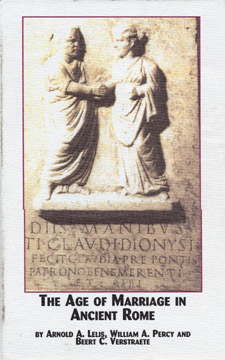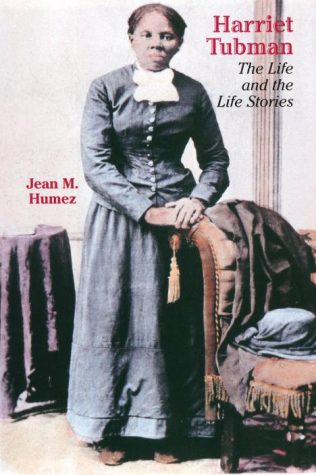Wedlock in the Ancient World

The Age of Marriage in Ancient Rome, edited in part by UMB professor William Percy
October 8, 2003
UMB Professor William A. Percy helped to edit the The Age of Marriage in Ancient Rome, a monograph exploring the fallacies of research that imply that the age of marriage between individuals was that of barely adolescent to perhaps even the mid or early 20s. Building upon the honors thesis of UMB alumnus and former student Thomas Permatteo, Percy collaborated with another UMB alumnus Arnold Lelis and Acadia University Classics Professor Verstraete to create a work that began two decades ago.
Percy is a professor of History at UMass Boston with an expertise in medieval and gay history. He received his PhD from Princeton and has been teaching at UMass Boston for nearly 30 years. Percy has acted as co-editor of the Encyclopedia of Homosexuality (which, interestingly, ousted William I, Norman conqueror of England) and the chapter “Homosexuality” in The Handbook of Medieval Sexuality. He has co-authored Outing: Shattering the Conspiracy of Silence and authored Pederasty and Pedagogy in Archaic Greece.
With this new work, Percy seeks to disprove the previous academic beliefs that Roman women were always married at an early age, though in Greek society the age difference played an important psychological role in transferring authority from the father to the husband. The high mortality rate of the Roman Empire was assumed to have had a large part in the reason for a union of the young. However, it depended more upon the politics of the family and the traditions they adhered to.
Percy argues that evidence of marriage was too spotty and blames the poor condition of records up the Punic Wars, the passage of time, and the fact that it wasn’t a subject in which Roman historians were concerned. Therefore, statistics based upon remaining information should be scrutinized closely with a skeptical eye. Plus, the existing accounts only describe the upper class in detail and the Roman Empire encompassed such a wide variety of cultures that there was no standard practice at the time.
Marriages for men happened at a later date due to homoerotic customs carried over from the Greeks and concern over careers. The legal age for boys was fourteen while for girls it was twelve. Yet, the stiff requirements of the Roman military made it vital to marry young and produce large families early in case anything happened to the father.
Drawing on the dramas of Plautus and Terrence, Percy infers customs and traditions from the satires of Roman sexual and marital behavior. Young men were encouraged to visit prostitutes and own sex slaves while pederasty was alternately practiced by senators on their prodigies and ridiculed as “perverse.” It’s easy to see where historians could become confused when the paradoxes in Roman society make it possible to derive any number of conclusions as to the practices of the ancients.
Overall, the monograph is highly technical but still readable for those interested in the practices of the ancient world. Well-researched and concise, it doesn’t encourage the skull-cracking yawns like most of the work churned out by academia. However, a more approachable work, both in educational and enlightening terms, would probably be Percy’s earlier work, Pederasty and Pedagogy in Archaic Greece, a discussion of the love-bond (spiritual or physical) between men and boys.






















































